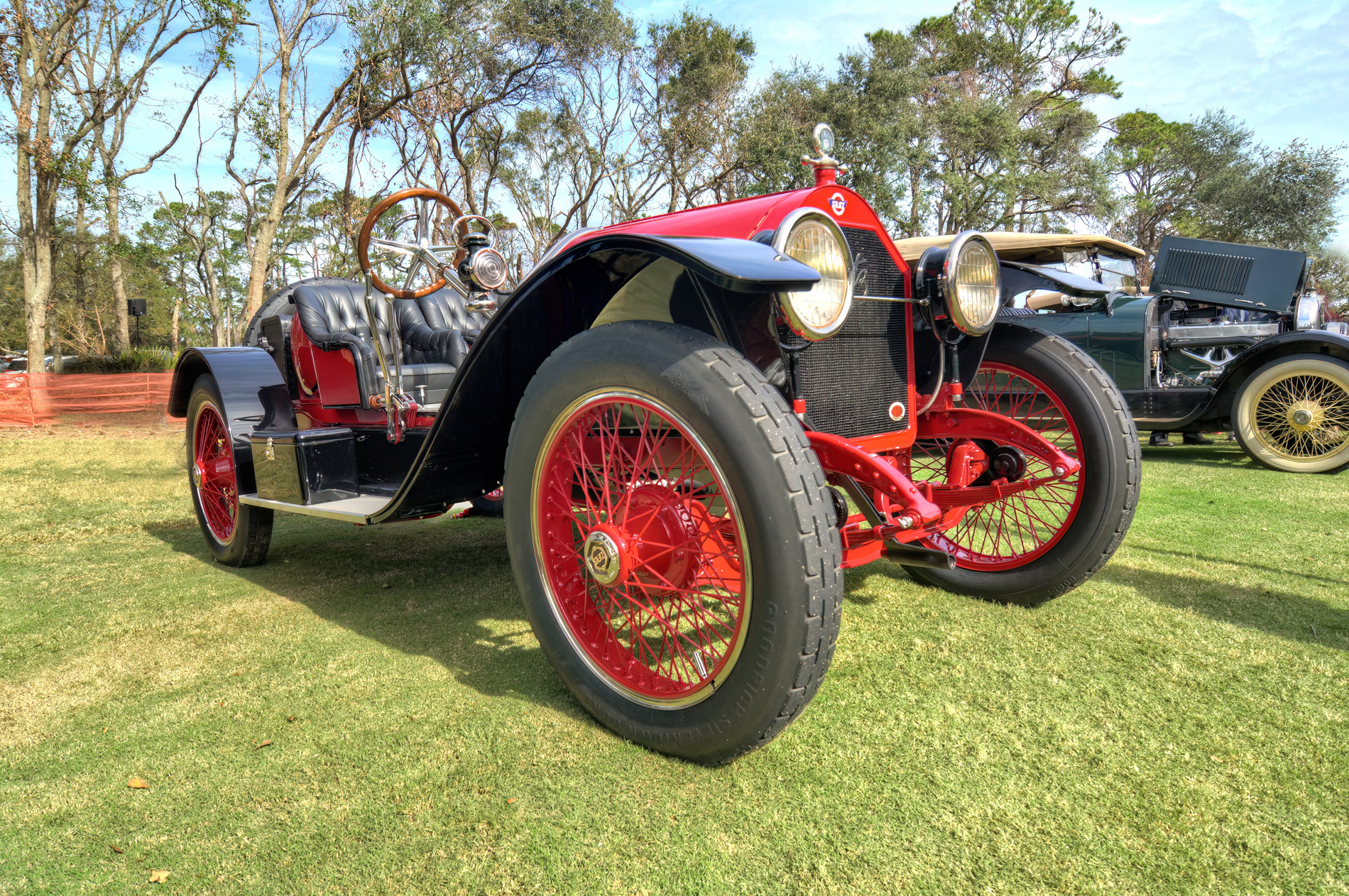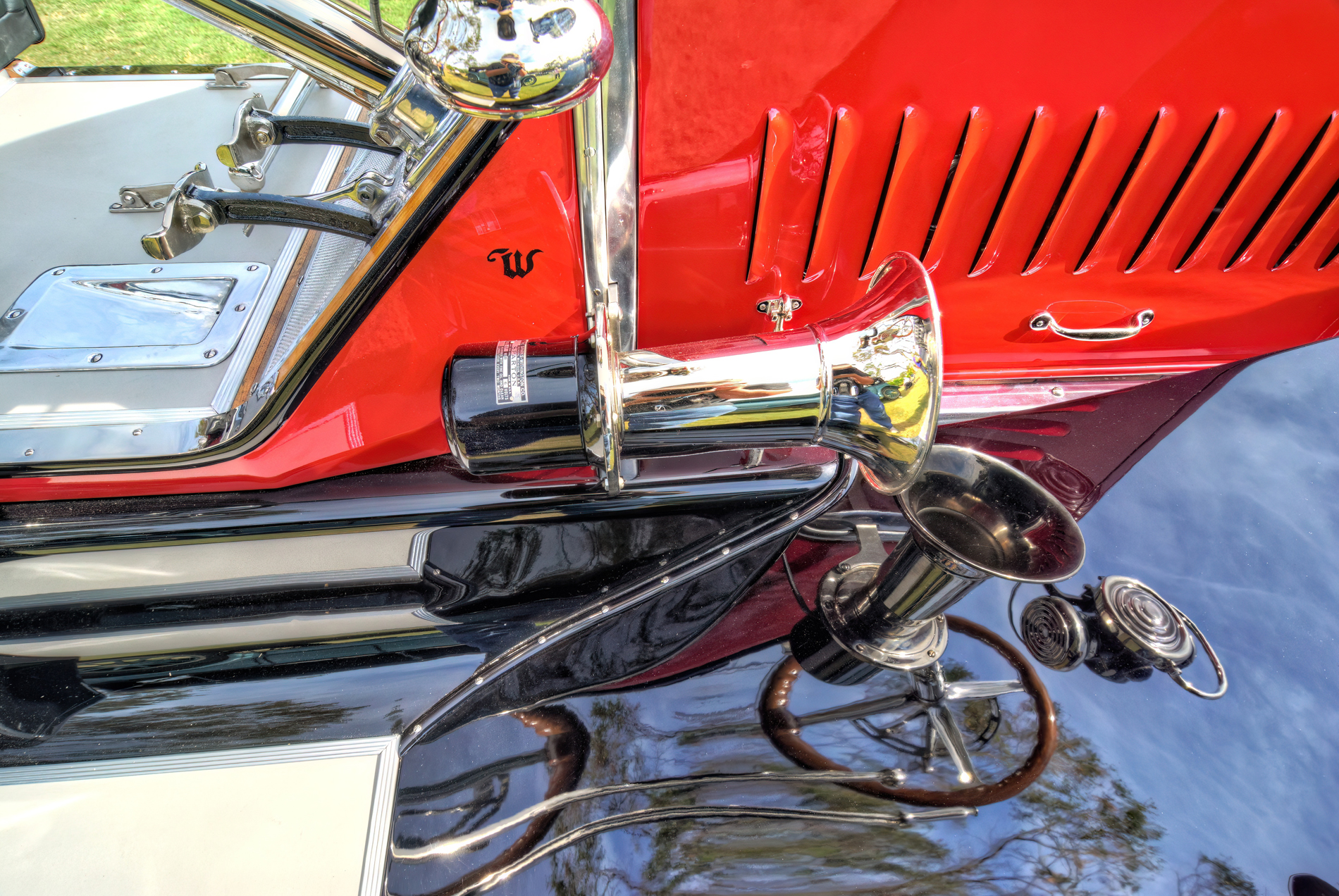
The 1914 Stutz Bearcat was a well-known American sports car of the pre and post WW1 period. Essentially the Bearcat was a shorter (120” wheelbase vs 130”) lighter version of the standard Stutz passenger cars chassis.
The colorful history and rakish image of the Stutz Bearcat made it one of the better known antique cars to later generations of Americans. It was often associated with the Roaring 20s and college students of that period.
This car came from the A.K. Miller collection, fully disassembled by Harvey Cater. It is equipped with a Wisconsin 360 ci, 60 hp engine with a split fire ignition system.
Introduction and Design: The Stutz Bearcat was introduced by the Stutz Motor Car Company in 1912 and continued production until the early 1920s. It was designed as a lightweight, high-performance roadster, embodying the spirit of early 20th-century sports cars. The Bearcat's design was minimalist, with a simple body and open cockpit, emphasizing speed and agility over comfort.
Engine and Performance: The 1914 Stutz Bearcat was powered by a robust T-head inline-four engine, typically displacing around 6.4 liters (389 cubic inches). This engine configuration was known for its reliability and power output, allowing the Bearcat to achieve impressive performance for its time. It was capable of reaching speeds that were exceptional in the early 1900s, making it a favorite among racing enthusiasts.
Racing Legacy: The Stutz Bearcat gained fame on the racing circuits of its day, both in professional competitions and informal races on public roads. Its lightweight construction, powerful engine, and responsive handling made it a formidable competitor, earning victories and setting records that enhanced its reputation as a sports car.
Popularity and Cultural Impact: Beyond its racing prowess, the Stutz Bearcat became a symbol of freedom and adventure. It appealed to wealthy individuals and enthusiasts who sought thrill and speed, reflecting the spirit of the Roaring Twenties. Its association with glamour and excitement contributed to its enduring popularity and cultural significance.
Continued Influence: The Stutz Bearcat influenced subsequent generations of sports cars, setting a precedent for lightweight, high-performance roadsters that emphasized driving pleasure and performance. Its legacy can be seen in later sports cars that prioritized agility and speed, shaping the evolution of automotive design and engineering.
Taken at the Hilton Head Island Concours d'Elegance & Motoring Festival.
You may purchase a print of the 1914 Stutz Bearcat in our dElegance 2016 online gallery.
The Vintage Automobile Article Index



